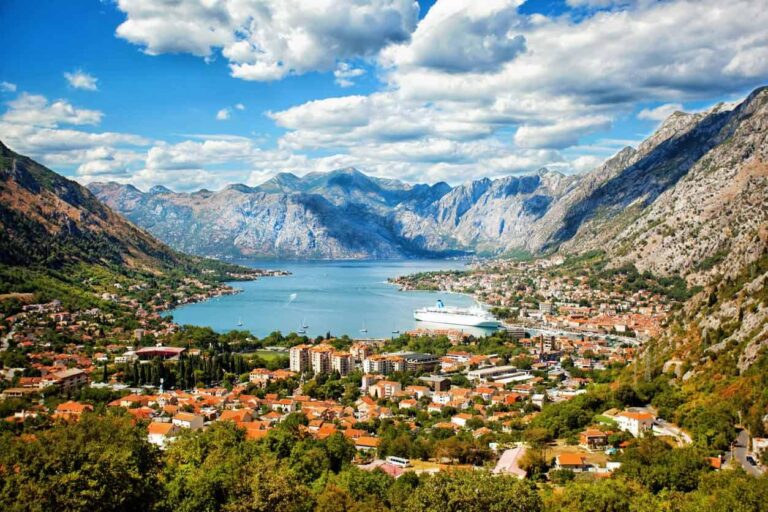Montenegro and Italy are poised to take a significant step toward regional energy cooperation by integrating their electricity markets, according to recent announcements reported by CE Energy News. This strategic move aims to enhance energy security, increase market efficiency, and promote the use of renewable resources across the Adriatic region. As both countries work to finalize regulatory frameworks and technical arrangements, the integration is expected to contribute to a more interconnected and resilient European energy landscape.
Montenegro and Italy Move Towards Seamless Electricity Market Integration
The energy sectors of Montenegro and Italy are poised to undergo a significant transformation as they work towards harmonizing their electricity markets. This strategic move aims to facilitate cross-border electricity trade, enhance grid stability, and promote the integration of renewable energy sources across both countries. Industry experts highlight that this cooperation will not only strengthen regional energy security but also create a more competitive market environment, ultimately benefiting consumers with improved pricing and service reliability.
Key aspects of the integration include:
- Coordinated market operations and shared scheduling platforms
- Enhanced infrastructure interoperability for real-time energy exchange
- Joint regulatory frameworks to streamline cross-border transactions
- Accelerated deployment of clean energy projects supported by bilateral agreements
| Integration Milestone | Montenegro | Italy |
|---|---|---|
| Market Coupling Start | Q4 2024 | Q4 2024 |
| Renewable Energy Target | 35% | 55% |
| Cross-Border Capacity (MW) | 500 | 500 |
| Regulatory Alignment Deadline | Mid 2025 | Mid 2025 |
Key Benefits and Challenges in Cross-Border Energy Collaboration
The integration of Montenegro and Italy’s electricity markets promises a range of strategic advantages that can strengthen regional energy security and market efficiency. Cross-border collaboration enables better utilization of renewable energy resources, reduces energy costs through enhanced competition, and fosters grid stability by balancing supply and demand fluctuations. Moreover, it opens pathways for increased investments in infrastructure modernization, supporting the broader European Green Deal objectives and accelerating the transition toward sustainable energy systems.
However, the partnership must also navigate several complex challenges that accompany such integration. Key hurdles include harmonizing regulatory frameworks, ensuring cybersecurity across interconnected grids, and managing differing market mechanisms and pricing models. Additionally, stakeholder coordination and data transparency are crucial to prevent market manipulation and maintain trust. Below is a summary of the primary benefits and challenges:
| Benefits | Challenges |
|---|---|
| Optimized renewable resource usage | Aligning regulatory policies |
| Enhanced grid reliability | Cybersecurity vulnerabilities |
| Reduced wholesale electricity prices | Market mechanism discrepancies |
| Attracting infrastructure investments | Ensuring data transparency |
Policy Recommendations to Ensure a Sustainable and Competitive Power Market
To foster a thriving electricity market between Montenegro and Italy, policymakers must prioritize transparency and robust regulatory frameworks that encourage private investment while safeguarding consumer interests. Implementing dynamic pricing mechanisms can help balance supply and demand efficiently, reducing the risk of market manipulation. Additionally, cross-border cooperation on grid infrastructure improvements will be essential to support increased electricity flow, enhance resilience, and integrate renewable energy sources seamlessly.
Strategic efforts should also focus on strengthening market monitoring institutions to ensure fair competition and prevent monopolistic behaviors. Enhancing data sharing protocols and harmonizing licensing procedures will streamline operations for market participants on both sides. Key policy actions include:
- Establishing joint regulatory bodies to oversee cross-border market activities
- Incentivizing investments in smart grid technologies and interconnection capacity
- Standardizing market rules to enable seamless integration and trading
- Promoting renewable energy uptake through supportive tariff structures
| Policy Area | Key Objective | Expected Impact |
|---|---|---|
| Regulatory Alignment | Unified market rules | Faster market integration |
| Infrastructure Investment | Grid modernization | Improved stability & capacity |
| Market Transparency | Real-time data access | Enhanced trust & competition |
| Renewables Support | Incentive schemes | Lower carbon footprint |
Insights and Conclusions
As Montenegro and Italy move forward with plans to integrate their electricity markets, the collaboration marks a significant step toward greater regional energy cooperation and market efficiency. This integration is expected to enhance grid stability, increase competition, and provide consumers with more reliable and cost-effective electricity. Stakeholders across the energy sector will be watching closely as implementation progresses, recognizing the potential impact on the broader European energy landscape.




